The bars use two infrared light sources and a single camera. The IR lights illuminate the eyes and provide reference points for the eye tracker and the single camera does both single and binocular eye tracking. Two “glints” appear on the pupil of the user’s eye from the IR light sources, and after a short calibration, the camera is able to know when and where the user looks. If two people are in front of the camera at the same time, it will only track the first person found by the camera.
The remote bar works well with most glasses and contacts.
- Hard-transition bi-focal glasses can cause problems; it is recommended the user upgrade to progressive bi-focal lenses if bi-focals are required.
- Hard contacts can also cause problems; it is recommended that the user wear soft contacts if contacts are required. The IR light is produced by LED’s at a wavelength of 850 nanometers.
Eye Tracking bars are also compatible with Microsoft Eye Control.
Place the eye tracker directly below the monitor with a magnetic strip or mount directly to the monitor using a VESA compatible mounting bracket or use the flexible desktop stand; the desktop stand allows for greater adjustment of tilt and makes it easier for people of different heights to be tracked.
This type of IR light occurs naturally in sunlight and in light from incandescent lamps. The IR light intensity at the user’s eye is less than is often experienced by most people during their daily activities. This is also well within the safety guidelines given in the book 2007 TLVs and BEIs by the American Conference of Governmental Industrial Hygienists.
EYE-TRACK-BAR has a 2-year hardware warranty.
AcqKnowledge Licensed Functionality
Eye Tracking and Stimulus Presentation
- Single user interface—presentation, eye tracking and physiology data
- Fixation displays—gazepath, graduated gazepath, fixations, and graduated fixations
- Attention maps—heat, 3D surface, and luminance
- Area of Interest creation
- Stimulation, beep alert, and external triggering
- Detailed Key Performance Indicator (KPI) reports – eye tracking and physiology combined in one single report
Area of Interest (AOI) Editor
- Area of Interest Creation Tool
- Rectangle
- Elliptical
- Polygonal—free form
- Area of Interest Controls
- Event mark insertion
- Start and stop stimulator
- Digital I/O control
- Attention Maps
- Heat Map
- Luminance Map
- 3D Surface Map
- AOI Reports
- Pie Chart—reporting KPIs for Areas of Interest
- Scarf Plot
- String Plot
- Combing eye tracking metrics with physiological data: mean heart and total time on the AOI / time of first hit in one single Excel report
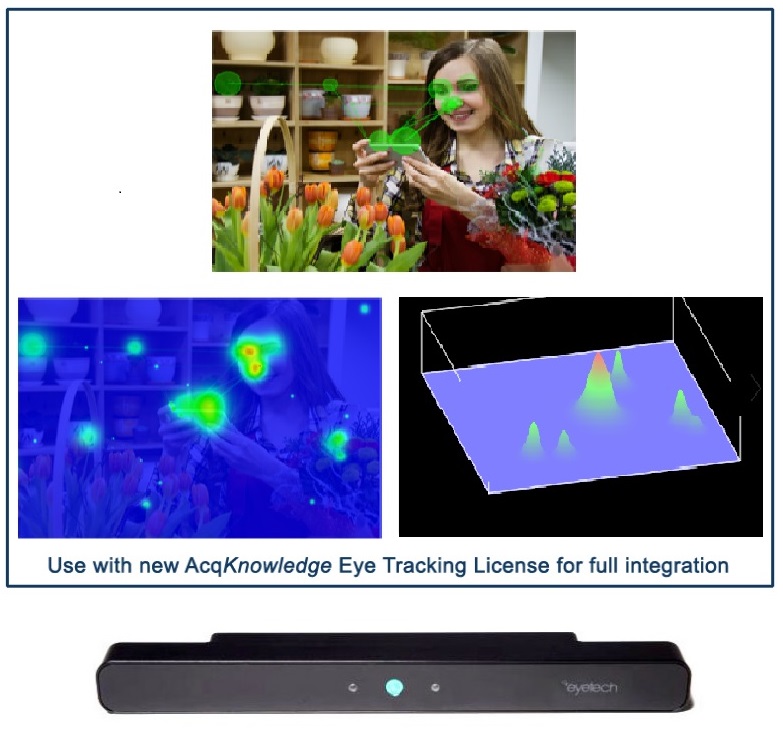






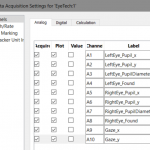
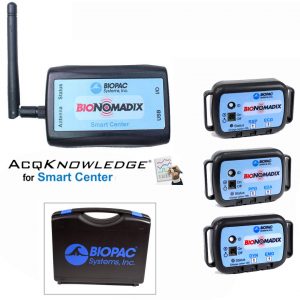
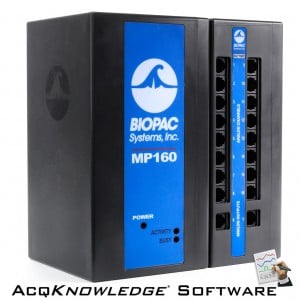
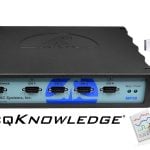
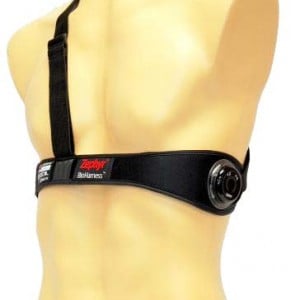
Stay Connected